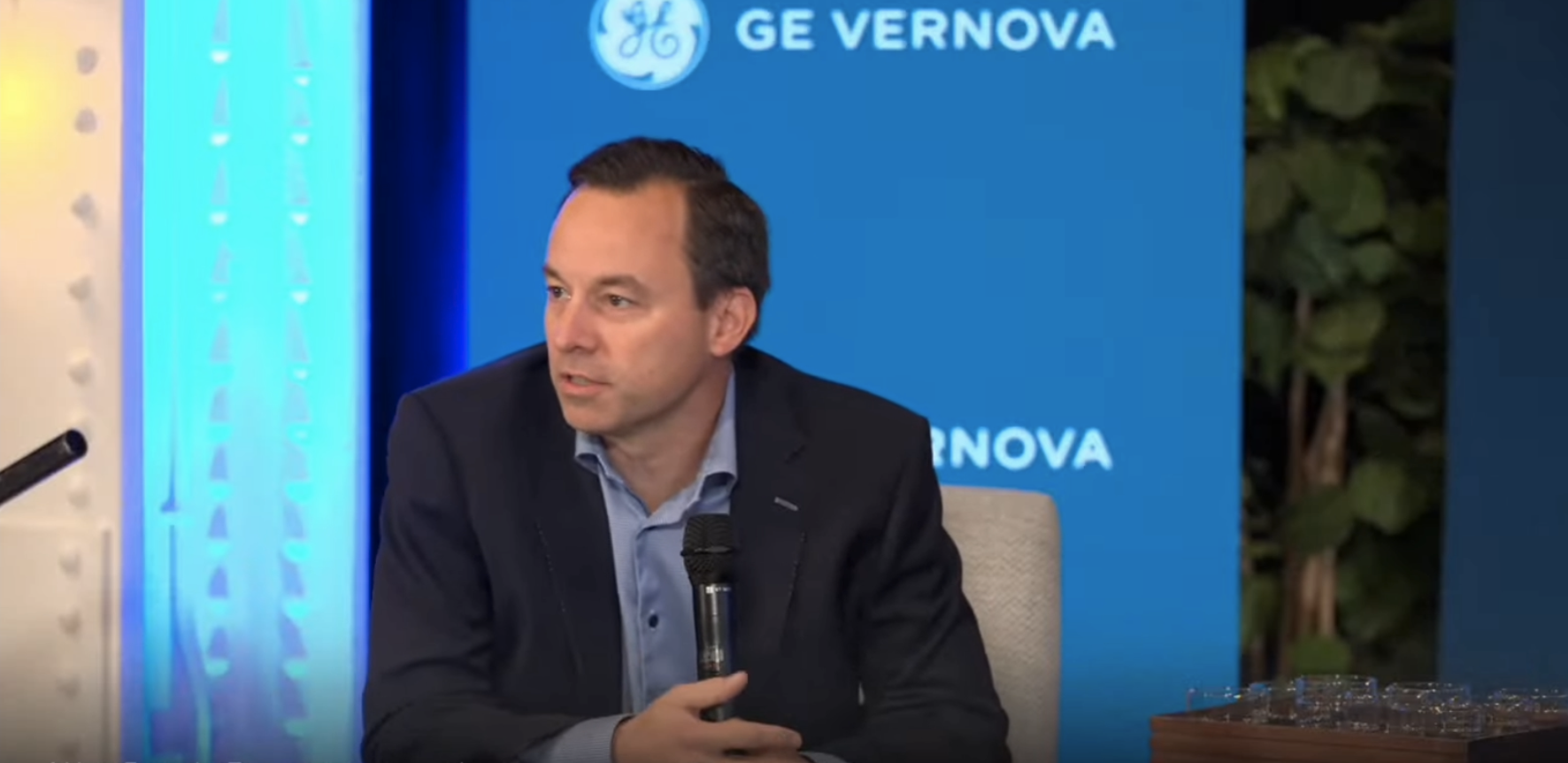On Monday, Sept. 23, at Climate Week and UN General Assembly, hosted by Axios House New York City, GE Vernova CEO Scott Strazik told the gathered crowd that a new phase of rising global demand for power has begun. “We’re clearly in an up cycle of demand,” he said. “And that, frankly, only increases the burden of responsibility — yet also the opportunity for us, as a system — to fix this.” Also in attendance were U.S. Energy Secretary Jennifer M. Granholm, Rockefeller Foundation President Rajiv J. Shah, and Columbia University Center on Global Energy Policy Founding Director Jason Bordoff, all of whom came together to make the “Case for Climate Optimism in Energy’s Uncertain Future.”
The two-sided effect of growth is a challenge for decarbonization: Momentum helps drive zero-carbon energy development nicely, but the overall expansion in demand makes it harder to begin eroding the existing fossil fuel base. In the United States specifically, Columbia’s Bordoff said, it’s been so long — 20 years even — since the U.S. power grid experienced any growth “that we lost muscle memory with how to meet growing electricity demand in this country.”
“To me,” Strazik said, “it’s one of the more contradictory things I’ve seen in the U.S. in the last six months: People are almost scared of growth.” But Strazik was clear that a stagnant, barely expanding system isn’t great for solving the climate problem. “Growth is the only thing that’s going to give us a chance to address this," he said.
Power-hungry data center activity, which is now joining earlier entrants like the long-term rise of electrified heat in buildings and the adoption of electric vehicles, is currently driving much of the growth in the U.S. “The projected growth rates are now two to three times what we thought they were,” said Bordoff. But there’s certainly been no letup in the build-out of new wind, solar, and storage capacity.

Granholm pointed out that 2024 will be a stellar year. “We will be adding 60 gigawatts of clean power on our grid this year. I mean, 60 gigawatts is a huge amount of power in one year! That’s 30 Hoover Dams’ worth of electric power.” While Granholm is correct that the nameplate capacity is the same, wind and solar still produce less electricity on an annual basis than most other sources. The U.S. has built so much new wind and solar that fossil fuel growth in the power system has been held in check for at least five years now. That’s a hopeful sign that the tide may be turning against legacy fossil fuel sources.
The Axios hosts spent a lot of the conversation asking about breakthrough technologies. For Granholm, the tech she said excites her the most is enhanced geothermal. “I really think that’s where there’s real potential — hundreds of gigawatts of heat, beneath our feet, which could be extracted in a safe way with little impact.” The Rockefeller Foundation’s Shah, meanwhile, said one of his causes for optimism is a new engagement between Rockefeller, the World Bank, the African Development Bank, and renewable energy developers to reach 300 million people in Africa with electrification by the year 2030. “This is a tremendous breakthrough for climate, and for development.”
“We need to further electrify the world while figuring out a way to decarbonize it at the same time. We need to add new energy while cleaning up what already exists,” Strazik said. “And that’s why we’re spending so much money on carbon capture and investing so much in hydrogen.” For anyone wanting to see cool new technology at work, he said, they need only visit GE Vernova’s Global Research Center in Schenectady, New York. There they can find direct air capture at work, along with another leading-edge technology, direct water capturing, also from air, which GE Vernova developed for troops in remote areas.
Asked what he tells young people to get them excited about the energy transition, Strazik said, “I have a son who loves to ski, and he knows if we don’t get this right, that skiing is going to change.” But GE Vernova’s CEO, true to the panel’s topic, remains optimistic. “The technologies exist. So this is there for the taking.”
Visit the Axios House Conference Agenda page to see more.
